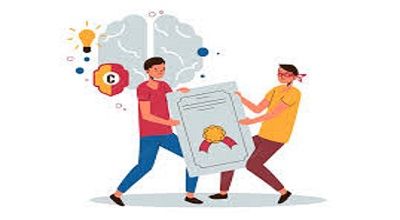5 Strategies for Inclusive Education
Top 5 Strategies for Inclusive Education aims to create an environment where all students, regardless of their abilities, backgrounds, or identities, can learn and thrive together. Here are five strategies for inclusive education along with examples:
Differentiated Instruction:
Example: In a diverse classroom, a teacher can use differentiated instruction by offering various ways for students to access the same content. For instance, providing different reading materials at varying levels of complexity to accommodate students with different reading abilities.
Universal Design for Learning (UDL):
Example: A teacher designs a lesson plan that incorporates multiple means of representation, engagement, and expression. This could include offering content in text, audio, and video formats, providing various activities for students to choose from, and allowing multiple ways for students to demonstrate their understanding, such as through writing, speaking, or creating visual projects.
Collaborative Learning:
Example: Encourage group projects and cooperative learning activities that require students to work together. Pairing students with different abilities can foster peer support and help students learn from each other. For instance, a math project might involve pairing a student who excels in math with one who struggles, allowing them to learn from each other’s strengths and weaknesses.
Accessible Learning Materials and Technology:
Example: Ensure that all learning materials and technology used in the classroom are accessible to students with disabilities. This could involve providing braille materials for visually impaired students, captioned videos for deaf students, and screen readers or text-to-speech software for students with reading difficulties.
Regular Assessment and Feedback:
Example: Implement formative assessments and provide timely feedback to all students. Consider using a variety of assessment methods, such as quizzes, written assignments, oral presentations, and hands-on projects, to accommodate different learning styles and abilities. Additionally, offer extra support or alternative assessments to students who may need them.
Culturally Responsive Teaching:
Example: Acknowledge and celebrate the cultural diversity within the classroom. Include literature, history, and examples from various cultures in the curriculum. Invite guest speakers from different backgrounds to share their experiences and perspectives, fostering a more inclusive and culturally aware learning environment.
Professional Development and Support:
Example: Schools should provide ongoing training and support for teachers and staff to develop their skills in inclusive education. This may include workshops on special education strategies, behavior management, and creating inclusive classroom environments.
Individualized Education Plans (IEPs) and 504 Plans:
Example: For students with disabilities, create and implement Individualized Education Plans (IEPs) or 504 Plans that outline specific accommodations and modifications to meet their unique needs. These plans may include additional time on tests, a designated aide, or modified assignments.
Positive Behavior Support:
Example: Implement a positive behavior support system that focuses on teaching and reinforcing positive behaviors rather than punishing negative ones. This approach can benefit all students, including those with challenging behaviors, by creating a more inclusive and supportive classroom environment.
Peer Support and Mentorship Programs:
Example: Establish peer support programs where students can mentor and support their peers with disabilities or special needs. This can promote empathy, social inclusion, and academic success for all students.
Summary
Inclusive Education is an ongoing process that requires dedication, flexibility, and a commitment to meeting the diverse needs of every student. These strategies, when tailored to the specific needs of your classroom and students, can help create a more inclusive and equitable learning environment.
